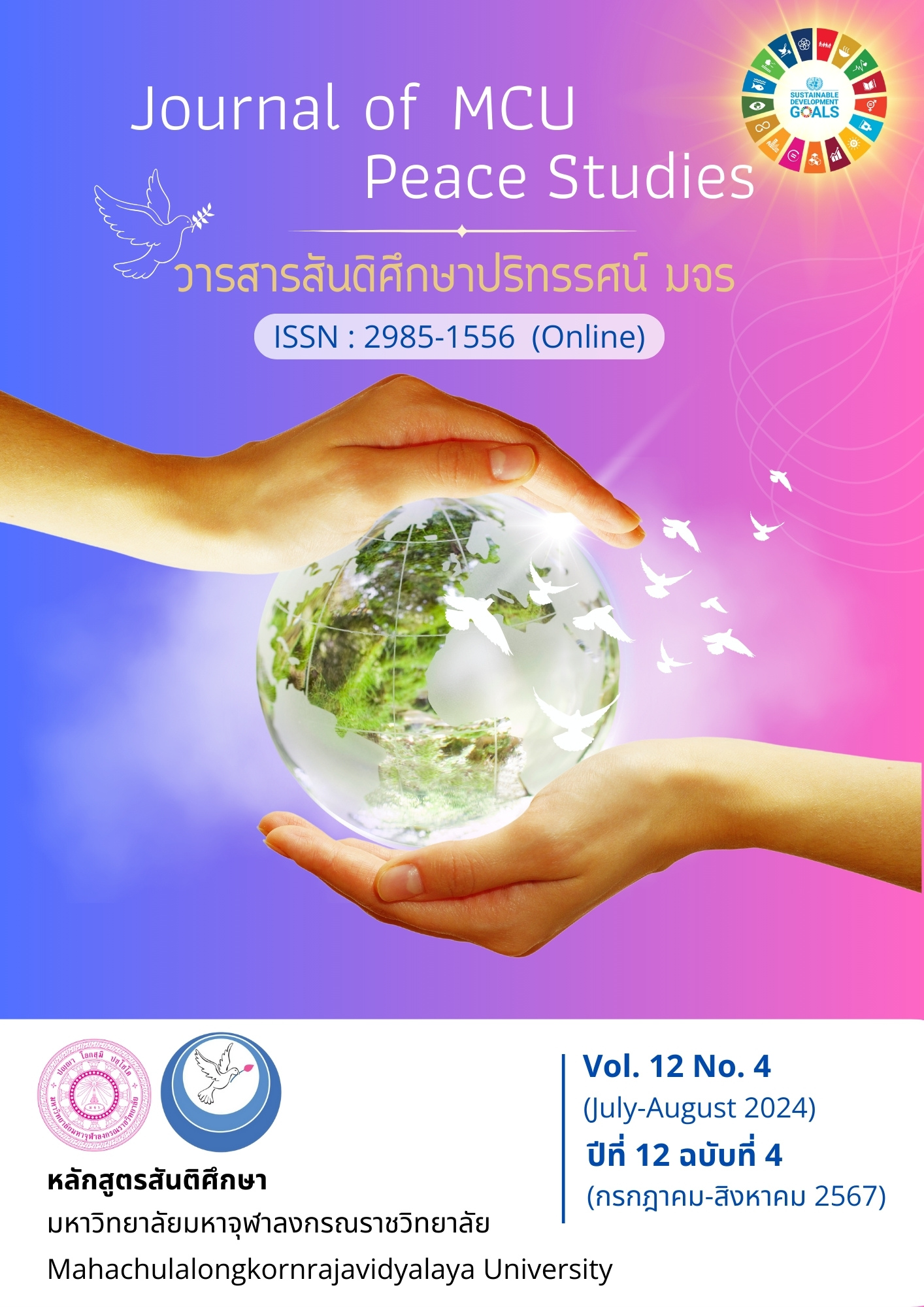ความเป็นไทยและความเป็นอื่นของกลุ่มชาติพันธุ์ไทลื้อ ไทยอง กระเหรี่ยง ในจังหวัดลำพูน
Main Article Content
บทคัดย่อ
การวิจัยนี้มีวัตถุประสงค์เพื่อศึกษาลักษณะความเป็นไทยและความเป็นอื่นของกลุ่มชาติพันธุ์ไทลื้อ ไทยอง กระเหรี่ยงในจังหวัดลำพูน เพื่อพัฒนาและเผยแพร่กระบวนการสร้างความเข้าใจในบริบท การอยู่ร่วมกันบนความแตกต่าง เป็นการวิจัยแบบเชิงคุณภาพ โดยใช้การวิจัยเชิงเอกสารและเชิงปฏิบัติการ เครื่องมือที่ใช้คือ แบบสัมภาษณ์ ชุดความรู้ วิเคราะห์ข้อมูลเชิงเนื้อหา นำเสนอด้วยวิธีการพรรณนา
ผลการวิจัยพบว่า 1) ลักษณะความเป็นไทย คือ กลุ่มชาติพันธุ์ทั้ง 3 กลุ่มนี้ ได้รับสิทธิและได้รับการปฏิบัติด้วยดีตามกฎหมายไทย ลักษณะความเป็นอื่นคือ มีอัตลักษณ์การแต่งกายและภาษาพูดเฉพาะของตนเอง นิยมทานผักเป็นส่วนใหญ่ สร้างบ้านยกพื้นสูง ยังคงนับถือบรรพบุรุษและนับถือผีบ้านผีเรือน และผีป่า ใช้ผีเป็นกฎของชุมชน มีค่านิยมในการนับถือผู้อาวุโส และนับถือพระพุทธศาสนา 2) ผลการพัฒนาและเผยแพร่กระบวนการสร้างความเข้าใจในบริบทการอยู่ร่วมกันบนความแตกต่างของความเป็นไทยและความเป็นอื่น พบว่า ได้พัฒนาชุดความรู้ชื่อ “ความเป็นไทย บนความเป็นธรรม” ที่นำเสนอความเป็นไทย ความเป็นอื่นของชาติพันธุ์และหลักพรหมวิหารธรรม เพื่อใช้สร้างความเข้าใจให้คนในสังคมได้เข้าใจในวิถีของกลุ่มชาติพันธุ์ให้อยู่ร่วมกันอย่างเป็นสุข โดยเผยแพร่ผ่านสื่อสิ่งพิมพ์ สื่อโซเชียล และหน่วยงานภาครัฐ
Article Details

อนุญาตภายใต้เงื่อนไข Creative Commons Attribution-NonCommercial-NoDerivatives 4.0 International License.
ทัศนะและความคิดเห็นที่ปรากฏในบทความในวารสาร ถือเป็นความรับผิดชอบของผู้เขียนบทความนั้น และไม่ถือเป็นทัศนะและความรับผิดชอบของกองบรรณาธิการ ยินยอมว่าบทความเป็นลิขสิทธิ์ของวารสาร
เอกสารอ้างอิง
Chaithong, W. (2013). Thai State Nationalism in the Mae Sot Border Economic Urban Area: Thai Nationalism as a Mechanism for Creating Otherness. Retrieved August 12, 2021, from https://armworawit.wordpress.com/2013/11/29/วาทกรรรมชาตินิยมของรัฐ
Chenchat, N. (2014). A Study of “Thainess” in New Media: A Case Study of Airline Business Advertising. (Master’s Thesis). Chiang Mai University. Chiang Mai.
Chetsada S. et al. (2018). A Critical Study of Buddhist Literature and Tai Yong Identity Maintenance in Lamphun Province. Journal of social academic, 11(3), 277-284.
Constitution of the Kingdom of Thailand B.E. 2560. (2017, April 6). the Government Gazette vol. 134, pp. 4, 18.
Department of Academic Affairs. (2011). Thai Language Norms Volume 1: Reading and Writing and Spelling. Thai Language Institute, Ministry of Education: Bangkok.
Narong S. (1998). Human and Society. (4th ed). Bangkok: O.S. Printing House.
Pali, T. (2016). Politics of Identity Reconstruction among Yong People in Lamphun. (Master’s Thesis). Chiang Mai University. Chiang Mai.
Phrakhrurattanakornvisut. (2022). The Principles of Brahmaviharas and Women's Rights. Journal of Buddhamagga, 7(1), 269-281.
Pipitkul, T. (2016). The Conservation and Application of Local Wisdom in Hand Woven Textiles of Yawng People in Lamphun Province. Journal of Humanities and Social Sciences Burapha University, 24(45), 139-156.
Rakngam, N. (2017). Conflict Management and Reconciliation Promotion Base on Buddhist Approach: A Case Study of 5-precept Maintenance Village Project in Chiang Rai Province. Journal of Social Academic, 10(3), 169-185.
Sattayanurak, S. (2011). The Struggle in Memory Space of Diverse Ethnic Groups in Thailand. Najua, 8(2011), 77-104.
Social Research Institute, Chiang Mai University. (2008). “Thai Yong, Life, Believe, Carve the Land”. Retrieved August 12, 2021, from https://www.sac.or.th/databases/ethnicredb/research_ detail.php?id=1823
Sukwat, B. (2015). Adaptation of the Tai Khen Ethnic Group: Bargaining for Official Cultural Citizenship Rights. (Doctoral Dissertation). Mahasarakham University. Maha Sarakham.
Vivattanaseth, P. (2018). Cultural Identity of Ethnic Group in TAI LUE’S Ritual of Life, Phayao Province. Payao University Journal, 28(2), 173-190.
Wongsongchan, K. et al. (2017). Cultural Adaptation in the Modern World of Karen Waterfall Village, Khlong Lan District, Kamphaeng Phet Province. Report from the 4th National Academic Conference. Kamphaeng Phet: Kamphaeng Phet Rajabhat University Research Institute.


